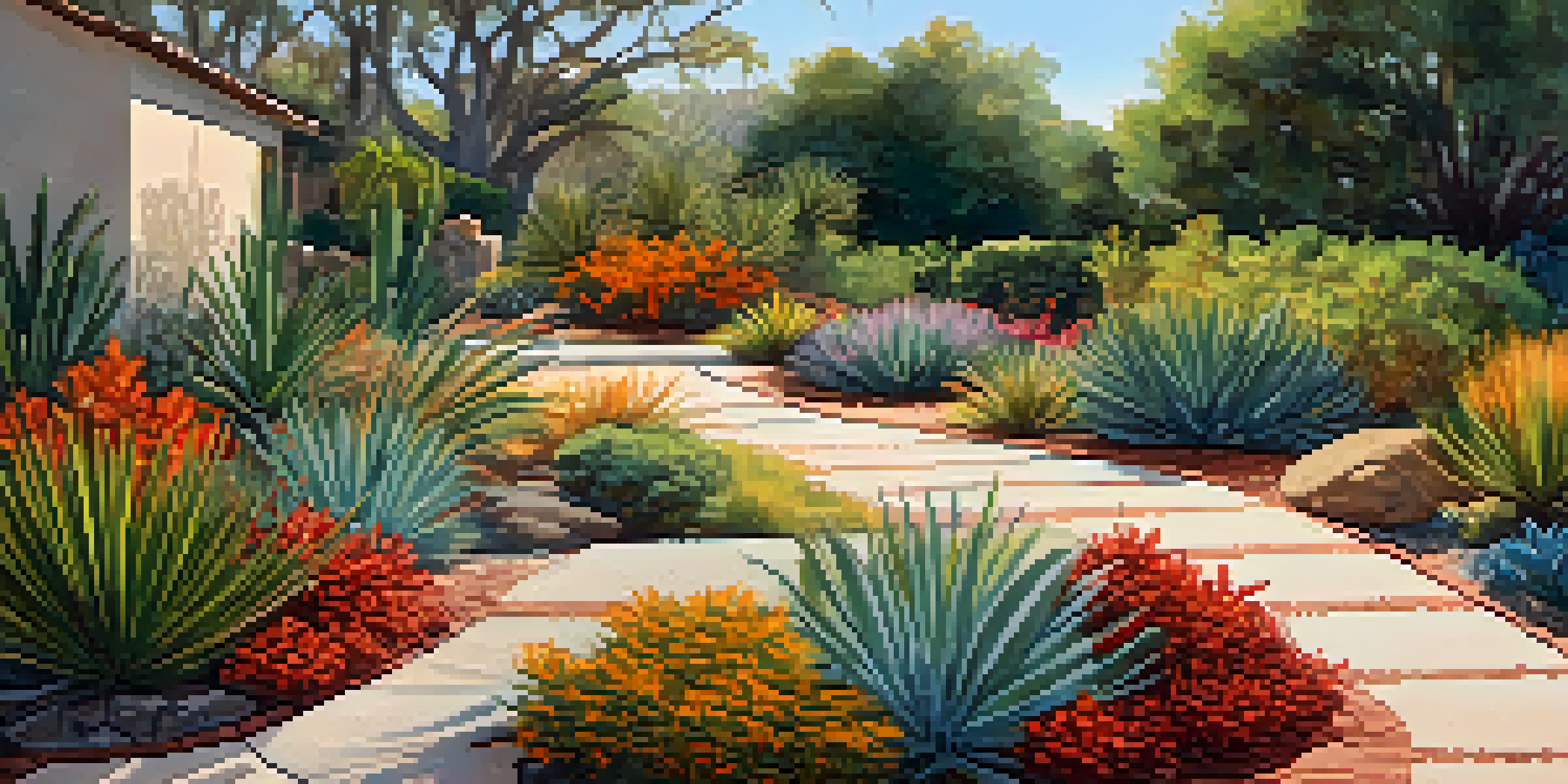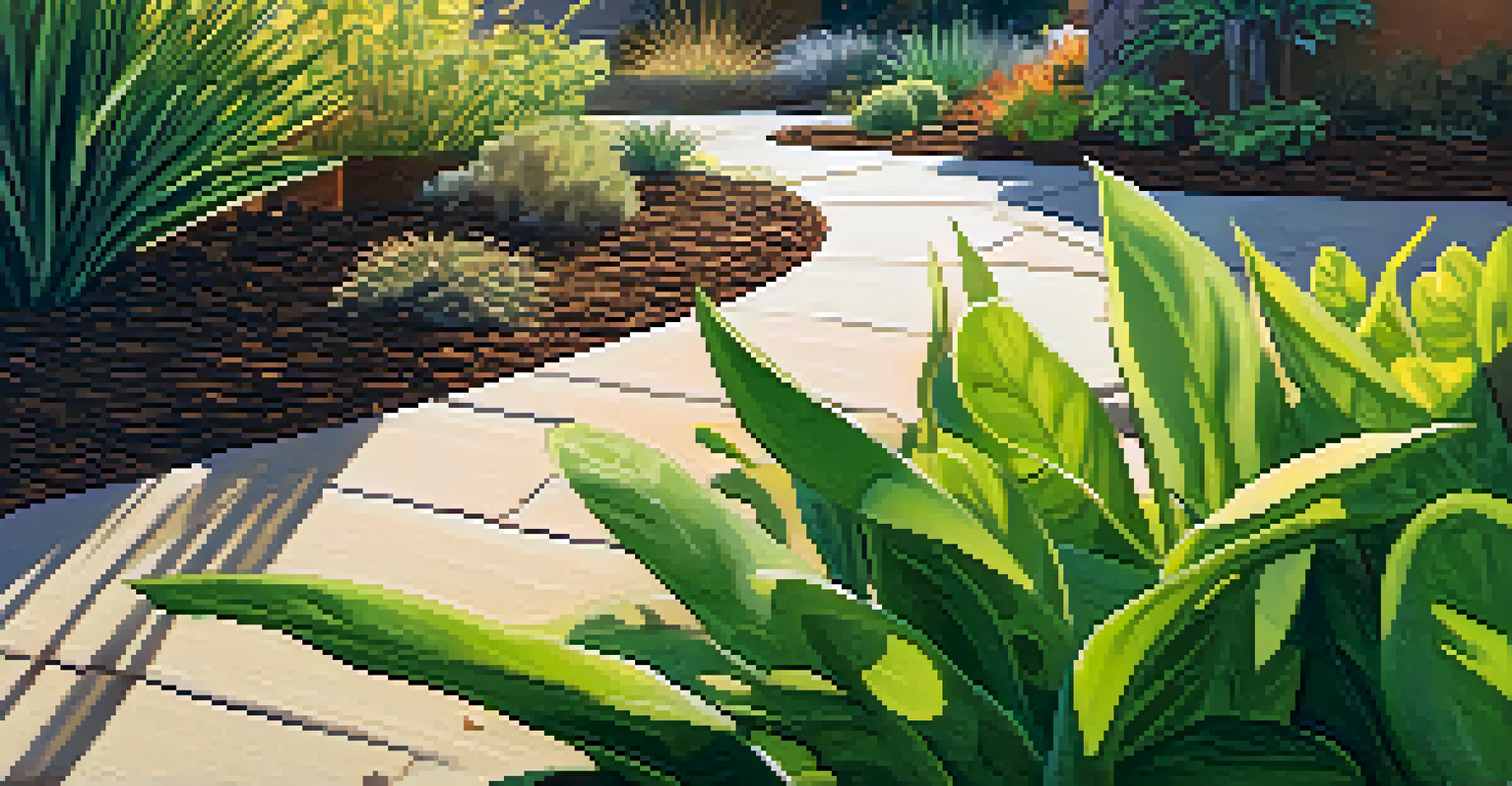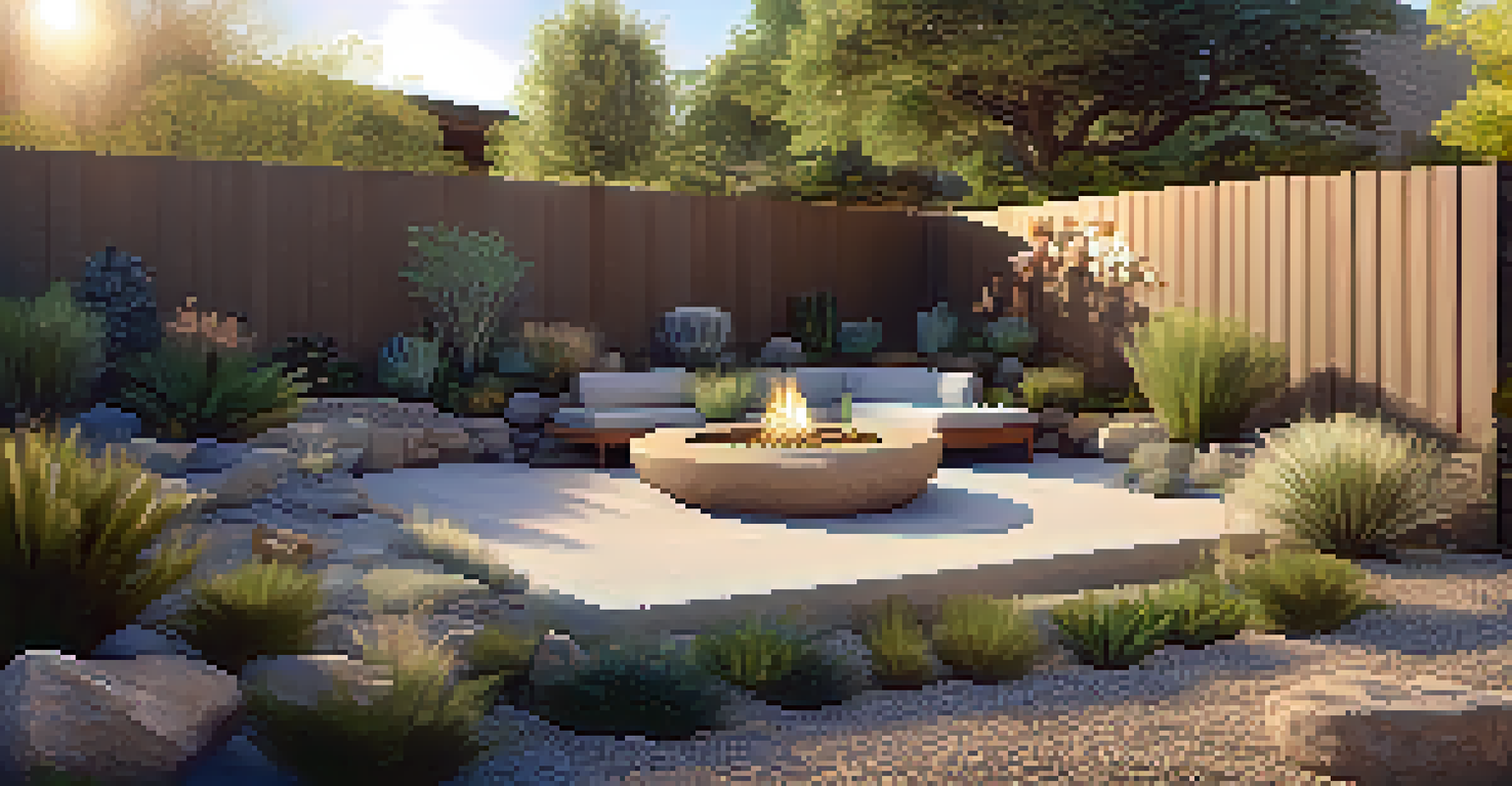Florida's Best Practices for Xeriscaping Your Yard

Understanding Xeriscaping and Its Benefits in Florida
Xeriscaping is a landscaping approach focused on water conservation, particularly important in Florida's often humid climate. This method not only reduces water usage but also creates a stunning yard that's both sustainable and easy to maintain. By understanding the principles of xeriscaping, homeowners can create beautiful spaces that thrive with minimal irrigation.
The best time to plant a tree was 20 years ago. The second best time is now.
One of the key benefits of xeriscaping is its ability to adapt to Florida's variable rainfall patterns. Instead of relying on constant watering, xeriscaping promotes the use of drought-tolerant plants that flourish even in dry spells. This not only conserves water but also supports local ecosystems by providing habitats for native wildlife.
Moreover, xeriscaping can significantly lower your water bill. Floridians are often shocked at how much they spend on irrigation, especially during the hot summer months. By implementing xeriscaping principles, you can enjoy a lush yard while keeping those costs down.
Choosing the Right Plants for Your Xeriscape
Selecting the right plants is crucial for a successful xeriscape. In Florida, native plants like the coontie and firebush are excellent choices, as they are adapted to local conditions and require less water. These plants not only thrive but also add to the aesthetic appeal of your yard.

Consider grouping plants with similar water needs together, a practice known as hydrozoning. This helps ensure that water is only applied where it’s necessary, preventing overwatering and promoting healthy growth. For instance, you might pair drought-resistant succulents with native grasses to create a vibrant, low-maintenance landscape.
Xeriscaping Promotes Water Savings
This sustainable landscaping method reduces water usage by utilizing drought-tolerant plants, crucial for Florida's climate.
By choosing the right mix of plants, you can create a diverse and dynamic garden that changes with the seasons. This variety not only enhances visual interest but also supports local pollinators, contributing to a healthier ecosystem in your backyard.
Soil Preparation for Effective Xeriscaping
Preparing your soil is a foundational step in xeriscaping. In Florida, many soils are sandy and drain quickly, meaning they can dry out faster than other types. Amending your soil with organic matter, like compost, can help retain moisture while providing essential nutrients for your plants.
Nature does not hurry, yet everything is accomplished.
Conducting a soil test can reveal vital information about pH levels and nutrient content, allowing you to tailor your soil amendments accordingly. Once your soil is ready, applying mulch can further help maintain soil moisture and reduce weed growth, making your xeriscape more resilient.
Think of your soil as the stage where your plants will perform. Just as an actor needs a solid platform to shine, your plants need well-prepared soil to thrive. Investing time in soil preparation will pay off with a lush and healthy landscape.
Watering Techniques for Xeriscaping Success
Effective watering techniques are essential for xeriscaping, especially in the initial stages. Deep watering is preferable to frequent shallow watering, as it encourages roots to grow deeper into the soil. This method not only promotes drought resistance but also fosters healthier plants overall.
Consider using drip irrigation systems or soaker hoses that deliver water directly to the roots, minimizing evaporation and runoff. This targeted approach is particularly beneficial during Florida's hot summer months when water conservation is crucial.
Choosing Native Plants Matters
Native plants like coontie and firebush are ideal for xeriscaping as they thrive in local conditions and require less water.
Timing is also important; watering early in the morning or late in the evening reduces water loss due to evaporation. By adopting these watering techniques, you can ensure your xeriscape thrives while conserving valuable water resources.
Incorporating Hardscapes in Your Xeriscape Design
Hardscaping refers to the non-plant elements of your landscape, such as pathways, patios, and decorative rocks. Incorporating hardscapes can enhance the aesthetic appeal of your xeriscape while providing functional spaces for relaxation and enjoyment. In Florida, materials like gravel or pavers can create attractive, low-maintenance surfaces.
Using hardscapes strategically can also help manage water runoff and erosion, especially during heavy rains. For instance, permeable pavers allow water to seep through, reducing pooling and promoting drainage. This not only protects your plants but also helps keep your yard looking tidy.
Think of hardscapes as the framework of your xeriscape. Just as a well-constructed house needs a solid foundation, your landscape benefits from thoughtfully placed hardscapes that enhance both functionality and style.
Mulching: A Key Element of Xeriscaping
Mulching is an integral practice in xeriscaping that offers numerous benefits. A layer of mulch helps retain soil moisture, suppress weeds, and regulate soil temperature, creating the ideal environment for your plants to thrive. Organic mulches, such as wood chips or straw, also break down over time, enriching the soil.
In Florida's warm climate, mulch acts like a protective blanket against the sun's harsh rays. It helps prevent evaporation, ensuring that your plants receive the hydration they need without excessive watering. Plus, the variety of mulch colors and textures can enhance your landscape's visual appeal.
Soil Preparation Enhances Growth
Amending sandy soil with organic matter and using mulch can significantly improve moisture retention and plant health in xeriscaping.
Remember to refresh your mulch annually to maintain its effectiveness. This simple step can make a significant difference in the health of your xeriscaped yard, keeping it vibrant and sustainable.
Maintenance Tips for a Thriving Xeriscape
While xeriscaping is designed to be low-maintenance, it still requires some care to thrive. Regularly checking for pests and diseases will help you catch potential issues early before they become major problems. Remember, a proactive approach is always better than a reactive one.
Additionally, seasonal pruning can keep your plants healthy and encourage new growth. Removing dead or damaged branches not only improves the appearance of your garden but also allows light and air to reach the remaining foliage.

Finally, as your xeriscape matures, it’s important to reassess your watering needs. Established plants may require less water over time, so adjusting your irrigation schedule will help conserve water and ensure your landscape remains healthy.